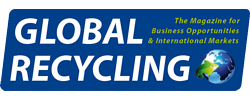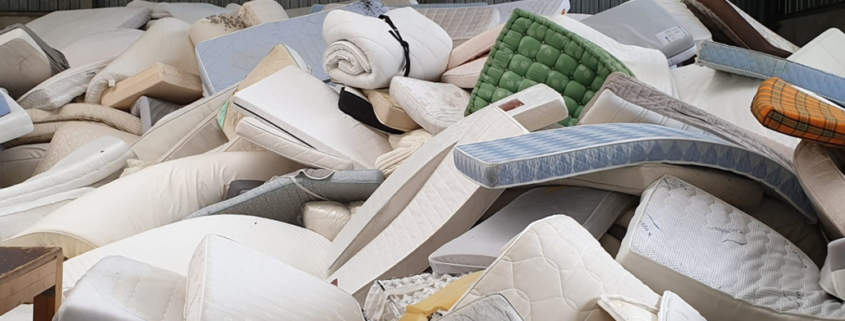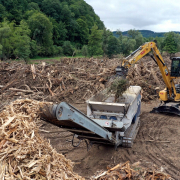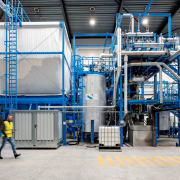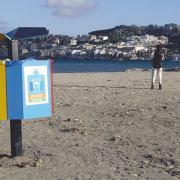Mattress Recycling: Worldwide but not Everywhere
According to numbers of Verified Market Reports, the global mattress recycling service market was valued at 1.2 billion US-Dollar in 2024 and is projected to reach 2.5 billion US-Dollar by 2033. The increasing demand for sustainable disposal methods and recycling initiatives is expected to drive an annual growth rate of 4.8 percent from 2022 to 2030. However, the varying national circumstances still promote a cautious optimism about this growth.
USA: Servicing customers nationwide
“Americans send more than 50,000 mattresses to the landfill each day, and less than five percent are recycled”, according to the Product Stewardship Institute (PSI), a policy expert and nonprofit consulting. In numbers, approximately 20 million mattresses are disposed of annually in the United States, resulting in significant landfill waste, says the U.S. Environmental Protection Agency (EPA). The mattresses add as much as 800 million cubic feet to landfills in the USA, says the Indian Sleep Products Federation in an international report on its homepage. It is not a lack of interest that keeps Americans from environmentally disposing of mattresses. The Northwest Product Stewardship Council admits that “interest in mattress stewardship has grown in recent years due to increasing disposal costs and the recognition that most mattress components are recyclable”. There is ample information available on various methods for handling mattress materials. For instance, American Mattress, a family-owned and operated company, provides a comprehensive guide on “How to get rid of a mattress.” And there is no shortage of opportunities that prevent the discarding: In June 2023, the A Bedder World company proclaimed on its website: “Now servicing customers nationwide” and added: “Our industry-leading network of over 3,000 drivers allows us to pick up and recycle mattresses across the entire United States.”
Only three states under EPR law
The obvious reason: There are only three (four) states in the United States that run mattress recycling programs. In California, Connecticut, Rhode Island/Oregon, they are mandated by law and managed by the non-profit organization Mattress Recycling Council (MRC). Developed in 2012 by state and local government members and industry input, Connecticut enacted the first mattress EPR law in 2013; later, mattress EPR laws were passed in California, Rhode Island, and Oregon. In 2015, PSI published the Advancing Mattress Stewardship: A How-To Guide. Since then, programs in Connecticut, California, and Rhode Island have recycled more than 12 million mattresses and diverted over 450 million pounds of material – steel, foam, cotton, and wood – from disposal.
According to their website, Bye Bye Mattress led to the recycling of 15 million mattresses in December 2024. With currently fees between 16 US-Dollar per unit and 22.50 US-Dollar in Oregon, the program will further enable the provision of collection locations with containers, transportation of the container to a recycler, and then the dismantling of those units. “Other portions of the fee help communities address illegal dumping or go towards research projects that improve recycling processes or end markets for the materials.” Part of the MRC budget in 2025 is provided for the compensation of “participating entities for collecting dumped units and reporting data on illegal mattress dumping, to fund pilot projects for innovative approaches to solving the illegally dumped mattress problem and to educate California residents about how to properly discard their used mattresses.” According to Mike O’Donnell, MRC Chief Operating Officer, the program in the three states California, Connecticut, and Rhode Island will recycle nearly two million mattresses a year.
Europe: An accumulation of several approaches
Europe is a conglomerate of different mattress disposal approaches. By founding a producer responsibility organization named Mattress-Recycling Germany, the Professional Association Mattress-Industry will create a solid basis for an extended producer responsibility. The Austrian Mattress Alliance was founded in September 2024 to establish a nonprofit association to create the best possible framework conditions for a circular business model in the mattress-recycling branch. Combined with Valumat, TripleR.io – together with five producers and three mattress recyclers – has, since 2024, stepwise introduced a digital product certificate in Belgium. In the Netherlands, it was estimated in 2020 that 75 percent of waste mattresses were collected and recycled. Now, RetourMatras has enough capacity to dispose of 1.5 million items. In France, the motto of Eco-mobilier was “No furniture to waste”; now its successor Ecomaison is responsible for recycling up to four million mattresses. The current report on end-of-life mattresses in the United Kingdom shows that collection losses still add up to 76 percent. In Ireland, EcoMattress Recycling and Bounce Back Recycling are the most prominent recycling services offering collection and possibilities. The dismantling quota lies between 11 and 17 percent. In Italy since 2022, mattress dismantling falls under an EPR regulation, and its handling is the task of the consortia Ecoremat and Ecotessili. In Spain, there is neither a nationwide initiative nor a specific program; still, 1.5 million mattresses end up in landfills.
Australia looking for appropriate standards
“Manual dismantling and shredding are the two common approaches to mattress recycling in Australia”, says ABSC, the Australian Bedding Stewardship Council, a not-for-profit organization with a voluntary, industry-led product stewardship scheme. Backed by the Federal Government and with authorization of the ACCC (Australian Competition & Consumer Commission), its members focus on manual deconstructing and sorting by hand of materials like steel and foam or the – eventually energetic – shredding for foams and fabrics /floc. As a mattress cannot be completely recycled in Australia and the materials recovered from mattresses have only limited value, ABSC aims to find new solutions for end-of-life materials and to support existing mattress recyclers to expand their services to retailers, councils, and consumers. The scheme is not yet offered to organizations that reskin or refurbish mattresses, but ABSC wants to develop appropriate industry standards “in line with The Department of Climate Change, Energy, Environment and Water’s stance on the right to repair and reuse legislation”. At least twelve mattress-recycling enterprises belong to the council that cooperates with Charitable Reuse Australia, Waste Recycling Industry Queensland, and the WMRR, as well as the Waste Management & Resource Recovery Association Australia. Soft Landing – an ABSC-approved recycler too – is in its own words Australia’s largest mattress recycler and ensures by its manual dismantling method “the highest percentage of mattress materials (up to 75 percent)”.
China: Focus on foam scraps and fabric remnants
If Jinlonghen, a mattress and bed manufacturer since 1992, is right, “energy-efficient manufacturing processes have become the cornerstone of sustainable production practices in China’s mattress industry”. That means both the adoption of advanced technologies and equipment, as well as the reduction of energy and water consumption, and the enhancement of efficient production. But investing in research and development to explore alternative materials and production techniques that require less energy introduces not only progress into the production sector, but they are likewise implements innovative techniques for recycling and reusing materials. The result: “Foam scraps and fabric remnants are collected and repurposed into various products or used as raw materials for other industries”, Jinlonghen concludes.
At the 56th China International Furniture Fair in March 2025 in Shanghai, a Facebook input of China IRN made clear that “China’s bed market has entered a new stage of high-quality development”. The supply side delivers improved industrial efficiency through material innovation and digital factory construction. In the future, enterprises would need increased investment in research and development of AI and Internet of Things, and among others, to “establish a circular economy system and promote mattress recycling projects”.
Volume progression by 15 percent wanted
In 2021, the Chinese website People’s Daily Online titled “Online service eases headache of disposal of large garbage” showed that private selling of large-sized furniture, offering it online to the flea market, or contacting garbage stations does not work. And storing it temporarily at facilities, asking for a mini collection program, or ordering a door-to-door collection service was expensive. Meanwhile, the wind has changed. According to an official publication of the State Council of the People’s Republic of China in 2024, the country wants to increase the volume of recycled home appliances and furniture by 15 percent by two years, “to grow the national recycling industry”. In the meantime, IKEA offers a furniture disposal service at its Hong Kong and Macau stores, Sourcify China published a comprehensive Guide for responsible furniture disposal in China, and Couch Disposal+ – covering 18,000 cities nationwide in the USA – offers appliance removal and disposal “in the most responsible method”.
Although information about organized mattress recycling is not available, the rising level of technical development can be measured from the offers by China’s recycling and dismantling techniques. Changshu Sail Nonwoven Machine Company, for example, offers its so-called Polyester Mattress Recycling Machine Bed Mattress Recycling Machine for 5,000 – 20,000 US-Dollar, Mingxin Machinery advertises a Mattress Plastic Recycling Industrial Food 2 Shaft Shredder Machine for 5,700 US-Dollar, and the Enerpat (Jiangsu) International Trading Company wants to sell a Pocket Coils Recycling Line for Mattress for 100,000 US-Dollar per piece.
Latin America: Little-to-no infrastructure
The judgment from materials science company Dow regarding the recycling of discarded mattresses is clear: “There is little-to-no infrastructure in place in Latin America to properly discard old furniture and bedding“. According to Dow, several thousand couches, living room chairs, and end-of-life mattresses were disposed of in local landfills, so that the discarded material could be recycled. Until the Reuse campaign was initiated.
In its first phase, launched in 2021 in the city of Hortolândia, Brazil, The Reuse collected and sent to recycling more than 3,500 items – gathering wood, polyurethane foam, fabrics, rubber, strings, and other materials. The project, which started in 2022, included fridges and freezers and expanded to other cities. By the end of the campaign, in May 2023, 105.8 tons of material were saved from landfills, and 72 tons of CO2 emissions were reduced. According to Dow, the Reuse campaign leveraged key learnings from the Renuva program in Europe, which recycled polyurethane foam from end-of-life mattresses and turned it into polyols for use in new mattresses and other applications.
Recycling programs in Brazil and Chile
According to Dow, the Reuse campaign in Brazil was a success, largely due to the support from the Mattress Recycling Council (MRC), which has funded research and development of mattress recycling technologies and provided resources for mattress recycling programs. Edge Global Innovation (EGI) also played a crucial role by developing the vitrimerization process for recycling polyurethane foam. Meanwhile in Brazil, mattress recycling is facilitated through initiatives like MRC, whose Bye Bye Mattress program allows residents to recycle mattresses and box springs at designated facilities, and Boomera do Brasil, providing circular economy solutions to difficult-to-recycle materials for various industries. In Chile, CIC – Saber vivir mejor, running a bed- and mattress factory, offers a mattress recycling program and has since recycled 17,631 beds and mattresses and covered 2,776 tons of material by recycling and composting of wood and sawdust.
Canada: difficult start
In 2013, at a conference hosted by the Solid Waste and Recycling magazine in Toronto, Simon Zysman, managing consultant of Recover Canada, reported on the national treatment of mattresses. According to the expert, mattress retailers have begun to substitute some mattress diversion initiatives, “but those efforts only divert about seven per cent of discarded mattresses in Canada”. At that time, about 70 percent of mattresses in Canada were either burned or landfilled: “That’s equal to approximately 50 million mattresses and box springs each year.” However, since 1996, Zysman’s Toronto-based company has diverted about one million mattresses from landfill. In 2014, the Environmental Consulting firm Giroux reported on mattress recyclers existing in British Columbia, Alberta, Ontario, and Québec. Some municipalities had started landfill bans for bulky items, but there was yet no legislated EPR in place for mattresses.
Consumers are the largest generators
A Research Paper published by the University of Halifax in Nova Scotia, Canada, in 2022, evaluates that approximately 95,000 mattresses end up in landfills, of which not even one-third of the amount is from industrial, commercial, or institutional generators and retailers. So, it is assumed with confidence that consumers are the largest generators of mattresses that end up in landfills, contributing an estimated 70 percent. According to BIV, Mattress Recycling has processed more than 650,000 mattresses since 2008, together with Scaldaferri at a rate of 70,000 to 90,000 units per year. Depending on its numbers, Canadian Mattress Recycling has recycled over 55,687,984 pounds of mattresses and furniture for residents and businesses across the Lower Mainland since 2011.
Africa: Demand goes upward
According to a brand-new market report on the Middle East and Africa mattress recycling service market, there is “stronger demand for mattress take-back schemes and eco-disposal services”. Except for several socio-economic variables, the reasons for the demand include increased adoption of digital solutions, rising longing for sustainable practices, and growing investments in infrastructure and innovation. Although the supply side is not yet adequately developed, the demand for take-back schemes for mattresses and more eco-disposal services is increasing, especially in rapidly developing regions as the United Arab Emirates, Saudi Arabia, South Africa, Nigeria, and Egypt. Driven by innovation, expanding markets, and advancing technologies, meanwhile, at least 25 mattress recycling services across the Middle East offer their service.
It must not be forgotten that in Africa, different interest groups already maintain several offers and programs online. For example, in South Africa, several services already exist that offer removal, recycling, or donation addresses for old mattresses. Now, a mattress manufacturing program like Restoric SA recycles more than 7,236 tons of material per year, handles 9,600 tons of textiles during the past year, and uses in its mattress production 30 percent of raw material coming from recycled materials. And even a small company like Mattress Warehouse uses materials like wood from the bed base, foam, cotton, and steel springs, and suggests creative ideas like using fabric strips from the sheeting to create new items or donating them to shelters.
India: Eight ways to get rid of it
The Indian Sleep Products Federation is straightforward in its assessment: “India lacks the infrastructure necessary for efficient mattress recycling. The country does not yet have a comprehensive network of specialized recycling centers equipped to handle bulky items like mattresses.” Lack of awareness, limited infrastructure, and informal sector dominance meet people who are unaware of the environmental impact of mattress disposal or the benefits of recycling”.
Harshad Parolkar of Flo Mattress – an online mattress seller – dissents and advocates that there are eight ways to dispose of old mattresses in India. Apart from donating, disposing of them yourself, dropping them at a collection point, or calling scrap dealers (Raddiwalas/Kabadiwalas), they can be listed for resale on local classified or online marketplaces. A professional disposal service might be hired in Mumbai, Kerala, Bangalore, Delhi, or Hyderabad, the items given to a popular recycling company like Hindusthan Recycling, The Kabadiwala, or Let’s Recycle, or finally a mattress exchange program chosen.
(Published in GLOBAL RECYCLING Magazine 3/2025, Page 32, Photo: RetourMatras)
